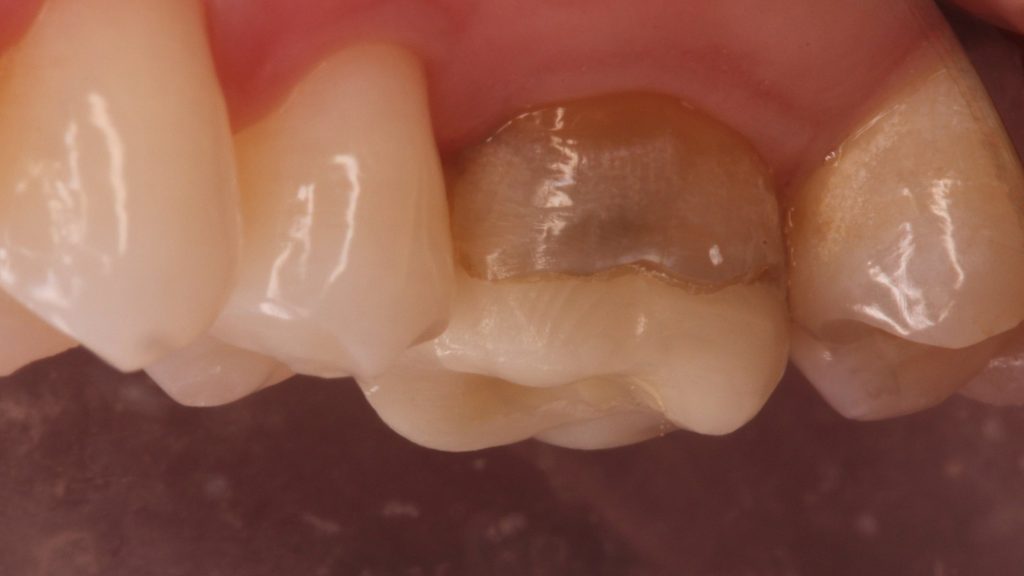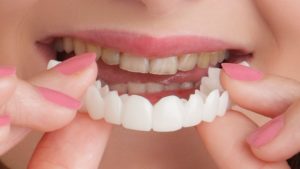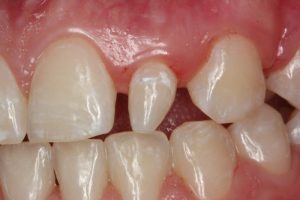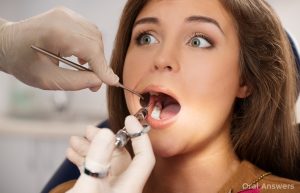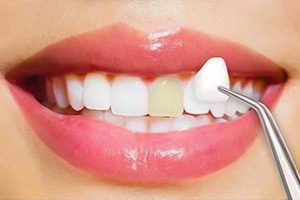Hello there,
I had three CEREC crowns done on my back teeth recently. I was pleased with how convenient getting the CEREC crowns was, but since then, I’ve had a lot of pain when chewing. Eating anything crunchy or chewy causes a bolt of pain, as though a nerve is exposed or something. I was wondering why my crown hurts when I chew.
My dentist has shaved down some of the crowns. He says the pain I feel is from how I grind my food when I chew. Is that the case? I’ve tried being more careful when I eat, but the pain I feel makes me nervous during meals.
Richard from Amityville, New York
Dear Richard,
There are a few reasons that can cause a new crown to hurt. One reason may be that the crown is too high, so the rest of your teeth hit it first when you bite into something. The second reason is that the tooth under the crown may be infected. The infection can cause inflammation in the jaw, causing constant jolts of pain when biting or chewing.
Your pain is unlikely to be caused by how you chew your food, as you did not have this problem before the crown. Also, CEREC crowns are supposed to fit exactly to your mouth’s specifications, as they are milled to fit your teeth precisely.
Since your dentist has tried to grind down the crown, your pain is not likely to be caused by hitting too high on the crown.
You will need to find out if you have an infection, and where it is in your mouth. An X-ray will be needed, and you may want to seek a second opinion if you do not trust your current dentist’s skills.
Understanding CEREC Crowns: A Quick Overview
CEREC crowns are renowned for their efficiency and precision, offering a same-day solution for dental restorations. While these crowns are generally well-tolerated, instances of discomfort or pain can arise, necessitating a closer examination.
Other Common Reasons for Pain When Chewing on Crown:
- Fit and Occlusion Issues:
If the CEREC crown doesn’t fit properly or if there are occlusal discrepancies (misalignment in how your teeth come together), it can result in discomfort or pain during biting and chewing.
- Sensitivity After Placement:
It’s normal to experience some sensitivity after the placement of a CEREC crown. However, persistent or increasing sensitivity may indicate underlying issues that need attention.
- Decay or Infection:
Pain around a CEREC crown could be a sign of decay or infection in the tooth underneath. Decay can develop if the crown doesn’t seal properly, allowing bacteria to infiltrate the tooth structure.
- Nerve Irritation:
During the crown placement process, the tooth’s nerve may become irritated. While this is usually temporary, prolonged irritation can lead to persistent pain.
- Gum Inflammation:
Inflammation of the gums around the CEREC crown, known as gingivitis or periodontitis, can cause pain and discomfort. This may be a result of inadequate oral hygiene or an ill-fitting crown.
Steps to Take If You Experience Pain:
- Contact Your Dentist:
If you’re experiencing pain around your CEREC crown, reach out to your dentist promptly. Describe the nature of the pain, when it started, and any factors that worsen or alleviate it.
- Professional Evaluation:
Schedule an appointment for a professional evaluation. Your dentist will conduct a thorough examination, including assessing the fit, occlusion, and condition of the CEREC crown. X-rays may be taken to examine the underlying tooth.
- Occlusal Adjustment:
If the pain is related to bite issues, your dentist may perform an occlusal adjustment to ensure proper alignment and reduce discomfort.
- Addressing Underlying Issues:
If decay, infection, or other issues are identified, your dentist will recommend appropriate treatments, which may include removing and replacing the CEREC crown.
Preventive Measures for Future Comfort:
- Regular Dental Check-ups:
Attend regular dental check-ups to monitor the condition of your CEREC crown and address any emerging issues promptly.
- Good Oral Hygiene Practices:
Maintain excellent oral hygiene by brushing, flossing, and attending regular dental cleanings to prevent decay and gum inflammation.
- Communicate Changes:
If you notice any changes in your oral health or experience discomfort, communicate these changes to your dentist promptly. Early intervention is key to preventing complications.
Conclusion: Regaining Comfort and Confidence
While pain around a CEREC crown can be concerning, it’s crucial to address the issue promptly to identify and resolve the underlying cause. Open communication with your dentist, professional evaluation, and a proactive approach to oral care contribute to regaining comfort and ensuring the longevity of your CEREC crown.

